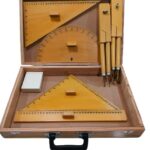Table of Contents
- Ultimate Guide to Plinko Game – Tips, Strategies, and Fun Facts
- Understanding the Mechanics of the Game
- The Design of the Plinko Board
- How Ball Trajectories Influence Outcomes
- The Role of Payout Zones
- Winning Strategies for Plinko Enthusiasts
Ultimate Guide to Plinko Game – Tips, Strategies, and Fun Facts
This captivating carnival-style experience combines chance with strategy, drawing in both casual players and seasoned gamblers. What sets this activity apart is its unique design that keeps participants on the plinko online edge of their seats as they await the final outcome of each round. Understanding the underlying mechanics, probability distribution, and player psychology can greatly enhance enjoyment and improve one’s performance.
Mastering this engaging pastime requires more than mere luck; it’s essential to explore various approaches and methods that can significantly influence the results. Analyzing payout structures, evaluating drop patterns, and managing betting behavior are critical to enhancing the overall experience. By making informed decisions, players can not only increase their potential winnings but also prolong their enjoyment of the session.
Beyond merely playing for monetary rewards, the social aspect of this pastime adds an intriguing layer. Friends and fellow enthusiasts often gather around, sharing strategies and celebrating victories together. In addition, understanding the historical context and the evolution of this popular entertainment option can provide deeper appreciation and enrich the overall experience for participants. Embarking on this adventure can lead to thrilling recollections and deeper connections with the gaming community.
Understanding the Mechanics of the Game
To excel in this entertaining activity, it’s essential to grasp how the setup operates. The board is designed with a series of pegs, creating a complex pathway for the disc as it descends.
The path taken by the disc is influenced by several key components:
- Pins: The pegs disrupt the descending trajectory, causing the disc to bounce unpredictably.
- Slots: At the base, various slots are assigned different point values. The final resting place of the disc determines the score.
- Launch Mechanism: The manner in which the disc is released affects its initial velocity and angle, thus impacting its journey through the pegs.
Understanding probabilities is crucial for enhancing your chances. Each peg creates a binary choice, influencing the direction of the disc. With a well-calibrated launch, you can harness the randomness to your advantage.
- Launch Angle: Experiment with different angles to observe changes in the distribution of outcomes. A steeper angle may yield more control.
- Force of Release: Vary the force applied when dropping the disc. More force can lead to a different interaction with the pegs.
- Observation: Pay attention to how discs have landed in previous rounds. Patterns may emerge that could inform your next approach.
Finally, consider mental exercises that enhance prediction skills. By regularly analyzing results and adjusting your methods, you could improve decision-making processes and outcome expectations.
The Design of the Plinko Board
The construction of a typical plinko board features a grid layout composed of a series of pegs and slots. Pegs are usually mounted at varying angles, creating a random path for the falling discs. Each peg acts as an obstacle that deflects the discs, generating unpredictability and excitement for players. The board’s dimensions may differ, but a standard size often includes a height of around 10 feet and a width of 4 feet. Such proportions allow sufficient space for the cascading discs to bounce effectively.
The slots at the board’s base serve as the final landing points for the discs, each associated with distinct payout values. They are arranged in a way that some options offer higher rewards, enticing participants to aim for those specific areas. A common practice is to place lower-value slots in the center and increase the values towards the edges, pushing players to take risks.
Color schemes are crucial to the visual appeal of the setup. Bright, contrasting colors enhance visibility and attract attention. For example, alternating red and blue slots can create a vibrant look, drawing participants to engage with the display. Incorporating lights or animations can further heighten the experience, especially in a casino or entertainment center setting.
The materials used in the creation of the board also play a significant role in its durability and functionality. A sturdy wood or composite surface is preferred for both stability and aesthetic appeal. Additionally, ensuring that pegs are strategically placed and securely fixed is imperative to maintaining the integrity of the game. The design process often involves rigorous testing to confirm that the board provides a fair and enjoyable experience, free from biases that could affect the outcome.
Incorporating user-friendly elements, such as clear instructions and rules displayed on the board, can facilitate better understanding. This helps newcomers to engage with the board without feeling overwhelmed. Moreover, the integration of technology, such as electronic displays that track scores or provide instant feedback, can enhance player interaction.
How Ball Trajectories Influence Outcomes
Understanding the physics of balls as they traverse through the pegs is essential for maximizing your chances. Each release point on the board significantly alters the trajectory, impacting where the ball eventually lands. A ball’s path is influenced by factors such as angle of release, initial speed, and the configuration of pegs in its pathway.
When the ball is dropped from a higher position, it generally gains more velocity before hitting the first peg. This increased speed can result in a more unpredictable trajectory, as the ball has the potential to bounce off at sharper angles, depending on how it interacts with the pegs. Players should be aware that positioning their release point towards the center often produces a more balanced outcome, reducing extreme left or right bounces.
An essential aspect of ball behavior is the kinetic energy transfer during collisions with pegs. The angle at which the ball strikes these obstacles can lead to deviation from a straight path. Players should experiment with varying drop points to observe how these changes affect final outcomes. Tracking results over multiple rounds can provide insights into the most favorable angles and strategies.
Moreover, observing how balls tend to cluster in certain zones can inform future game choices. Statistical analysis of previous rounds may reveal patterns–such as a tendency for balls to gather in specific pockets, which can be exploited for better prediction of win placements. Utilizing this insight can enhance decision-making processes.
Wind, bumpiness of the playing surface, and even the weight of the balls can also impact performance, albeit to a lesser degree in controlled environments. Each of these factors contributes to the randomness that makes any session an exhilarating experience yet unpredictable.
A comprehensive understanding of these dynamics not only enhances enjoyment but can also sharpen your ability to anticipate where your ball may land. Thus, paying attention to how trajectories shift with varying inputs can lead to more successful outcomes during play. Experimentation combined with careful observation of ball behavior will undoubtedly increase your proficiency in navigating the challenges presented by the board.
The Role of Payout Zones
Payout zones are critical components of the amusement, determining potential winnings as the ball navigates through the playing field. Each zone has designated values that significantly influence the overall outcome and player strategy. Understanding these zones can enhance decision-making and increase enjoyment.
Payout areas can vary based on the specific layout and house rules, but they typically consist of multiple sections, each corresponding to different payout amounts. The values assigned to each section are influenced by factors such as the game’s design and payout percentages. Players should analyze the payout structure to optimize their chances of landing in high-value areas.
| High Value | 100x | 5% |
| Medium Value | 50x | 15% |
| Low Value | 10x | 30% |
| Minimal Value | 1x | 50% |
To maximize potential rewards, players often identify patterns in ball trajectories. Monitoring the feed’s bounce angles can lead to more strategic placement of bets. Additionally, adjusting the launch power may yield favorable results, facilitating a better landing in lucrative zones.
Players must remain aware of the volatility associated with different payout sections. Higher rewards may be tempting, but they require a more precise strategy and may not be attainable as frequently. Conversely, lower payouts offer increased landing frequency but may not provide the desired thrill.
Incorporating careful observation and analysis of payout patterns is essential for enhancing overall experience. Engaging with zones effectively can definitely amplify the excitement and provide a rewarding experience for participants.
Winning Strategies for Plinko Enthusiasts
Maximizing your chances in this engaging chance-based pastime involves understanding the mechanics at play. One method is to analyze the payout structure carefully. Each drop zone offers different rewards; hence, choosing zones with higher rates increases your odds of winning. Research the payout table and identify which areas yield the best returns.
An additional approach is to observe patterns. Although the outcome of each drop is random, experienced participants note trends during gameplay sessions. By tracking previous results, you can make informed decisions on where to drop your chip, potentially leading to higher returns.
Dividing your bankroll into smaller segments can enhance your gameplay. This allows you to manage your funds more effectively, prolonging your experience and increasing the likelihood of encountering favorable outcomes. Rather than risking everything on a single drop, spread your bets across several rounds.
Engaging with community forums can provide insights into the optimal techniques used by seasoned players. Sharing experiences, discussing different methods, and learning from others’ successes can refine your own approach. Often, practical advice from the community can reveal hidden strategies that are not apparent through individual play.
Patience plays a crucial role. Rather than rushing to drop chips, take your time to contemplate your next move. Some players find success in varying their strategies based on the pace of the game, adapting their drops according to their observations of the board’s behavior.
Lastly, setting limits is essential. Determine beforehand how much you are willing to spend and adhere to that limit. This disciplined approach not only safeguards your finances but also enables you to enjoy the activity without the stress of potential loss.































